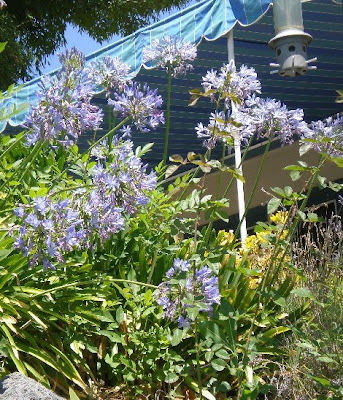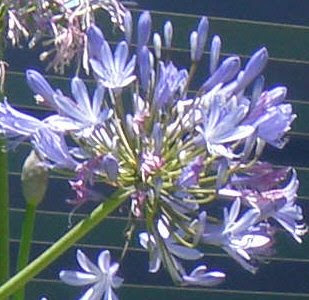 It's amazing, the things you can learn just browsing through a university catalog. Our own Cal State Northridge offers a minor in gerontology. One of the required courses is, of course, "Introduction to Gerontology". It covers some of the things you might expect: issues of health, economics, social roles, etc. Among other things, students have the opportunity to engage in volunteer work at "agencies for persons over 55". I'm almost certain that isn't a typo. Fifty-five. Quite seriously, I would have expected people to be at least 70 before falling into this category. But maybe I had gerontology confused with geriatrics. Geriatrics is an area of medicine dealing with elderly patients. I've always expected that to mean people older than 70. (And a lot of people in their 70's will tell you they aren't elderly yet.) Gerontology is the study of the aging process, and includes more than just medicine. Let's face it, we are all aging all the time. Even so, in this era when we are told that "50 is the new 30", I don't think there are very many fifty-five-year-olds who are eager to find junior gerontologists following them around and taking notes.
It's amazing, the things you can learn just browsing through a university catalog. Our own Cal State Northridge offers a minor in gerontology. One of the required courses is, of course, "Introduction to Gerontology". It covers some of the things you might expect: issues of health, economics, social roles, etc. Among other things, students have the opportunity to engage in volunteer work at "agencies for persons over 55". I'm almost certain that isn't a typo. Fifty-five. Quite seriously, I would have expected people to be at least 70 before falling into this category. But maybe I had gerontology confused with geriatrics. Geriatrics is an area of medicine dealing with elderly patients. I've always expected that to mean people older than 70. (And a lot of people in their 70's will tell you they aren't elderly yet.) Gerontology is the study of the aging process, and includes more than just medicine. Let's face it, we are all aging all the time. Even so, in this era when we are told that "50 is the new 30", I don't think there are very many fifty-five-year-olds who are eager to find junior gerontologists following them around and taking notes.
How Old is Old?
 It's amazing, the things you can learn just browsing through a university catalog. Our own Cal State Northridge offers a minor in gerontology. One of the required courses is, of course, "Introduction to Gerontology". It covers some of the things you might expect: issues of health, economics, social roles, etc. Among other things, students have the opportunity to engage in volunteer work at "agencies for persons over 55". I'm almost certain that isn't a typo. Fifty-five. Quite seriously, I would have expected people to be at least 70 before falling into this category. But maybe I had gerontology confused with geriatrics. Geriatrics is an area of medicine dealing with elderly patients. I've always expected that to mean people older than 70. (And a lot of people in their 70's will tell you they aren't elderly yet.) Gerontology is the study of the aging process, and includes more than just medicine. Let's face it, we are all aging all the time. Even so, in this era when we are told that "50 is the new 30", I don't think there are very many fifty-five-year-olds who are eager to find junior gerontologists following them around and taking notes.
It's amazing, the things you can learn just browsing through a university catalog. Our own Cal State Northridge offers a minor in gerontology. One of the required courses is, of course, "Introduction to Gerontology". It covers some of the things you might expect: issues of health, economics, social roles, etc. Among other things, students have the opportunity to engage in volunteer work at "agencies for persons over 55". I'm almost certain that isn't a typo. Fifty-five. Quite seriously, I would have expected people to be at least 70 before falling into this category. But maybe I had gerontology confused with geriatrics. Geriatrics is an area of medicine dealing with elderly patients. I've always expected that to mean people older than 70. (And a lot of people in their 70's will tell you they aren't elderly yet.) Gerontology is the study of the aging process, and includes more than just medicine. Let's face it, we are all aging all the time. Even so, in this era when we are told that "50 is the new 30", I don't think there are very many fifty-five-year-olds who are eager to find junior gerontologists following them around and taking notes.
What's Happening the the Valley
 Gerald Fecht is the president of The Museum of the San Fernando Valley and a tireless blogger. While some of us struggle to post once or twice a week, Jerry sometimes posts several articles in a single day. He is well-versed in history and also seems to know everything that's happening right now. He posts photos from the museum's archives, as well as recently-snapped pics of public art, landscapes, buildings and people.
Gerald Fecht is the president of The Museum of the San Fernando Valley and a tireless blogger. While some of us struggle to post once or twice a week, Jerry sometimes posts several articles in a single day. He is well-versed in history and also seems to know everything that's happening right now. He posts photos from the museum's archives, as well as recently-snapped pics of public art, landscapes, buildings and people. The museum's blog is a great place to find out about upcoming events as well as volunteer opportunities. I'm especially interested in the occasional walking tours, and hope to join one in the near future.
Take a look at http://museumsanfernandovalley.blogspot.com.
Will They Be Towed At Last?
 A long stretch of Topanga Canyon Boulevard has received temporary no parking signs so that some kind of road work can be done. One section in particular has become notorious for the illegal signs that the city allows to park here. This morning, most of the signs had been removed. Someone had placed the no-parking signs prominently on the two that remained, probably hoping that the city really will enforce regulations and tow them away. We'll see what happens.
A long stretch of Topanga Canyon Boulevard has received temporary no parking signs so that some kind of road work can be done. One section in particular has become notorious for the illegal signs that the city allows to park here. This morning, most of the signs had been removed. Someone had placed the no-parking signs prominently on the two that remained, probably hoping that the city really will enforce regulations and tow them away. We'll see what happens.


When I stopped to photograph them, I noticed that the license plates had been removed from both the trailers. Photographs taken in December reveal that these trailers did have license plates at one time. Without the plates, it will be difficult to identify the owners when -- or rather if -- the trailers are towed to make way for the road work. One can only hope that this will represent a meaningful financial loss to the scofflaws who put them here.
Yes, I photographed these same signs in December, six months ago. Despite repeated complaints by local residents to both Parking Enforcement and the Bureau of Street Services, the city will not do anything about this ever-worsening problem. Here you can see the weeds that have grown up around the anchor of one of the trailers, and one of the spider webs that is decorating the other one.


By the way, Carmen Trutanich, who claimed to oppose illegal signs and promised to enforce regulations against them as part of his campaign for city attorney, was sworn into office July first. It will be interesting to see if anything will actually change.
Agapanthus
 Agapanthus is sometimes called Lily of the Nile, African Blue Lily, or similar names. There are several species of this South African native, but most sold in nurseries here are agapanthus praecox or its subspecies agapanthus orientalis, even though they are sometimes mislabeled as agapanthus africanus. Once established, they are drought tolerant, and do well in almost any area with well-drained soil. They like full or part sun, and bloom during spring and summer. Some produce white flowers, others are light blue or lavender. Hummingbirds love them!
Agapanthus is sometimes called Lily of the Nile, African Blue Lily, or similar names. There are several species of this South African native, but most sold in nurseries here are agapanthus praecox or its subspecies agapanthus orientalis, even though they are sometimes mislabeled as agapanthus africanus. Once established, they are drought tolerant, and do well in almost any area with well-drained soil. They like full or part sun, and bloom during spring and summer. Some produce white flowers, others are light blue or lavender. Hummingbirds love them!Agapanthus has rhizomatic roots, and can be propagated by division. The best time to do this is in the fall when blooming is over. You can simply dig up a clump, divide it into a few sections, and plant each one separately. They will also sometimes spread on their own. When you are working with this plant, be aware that its sap can be extremely irritating, causing a poison-ivy like rash on the skin, and severe ulceration of the mouth and mucous membranes. I wear long sleeves and/or elbow-length gloves when I cut or replant them.

